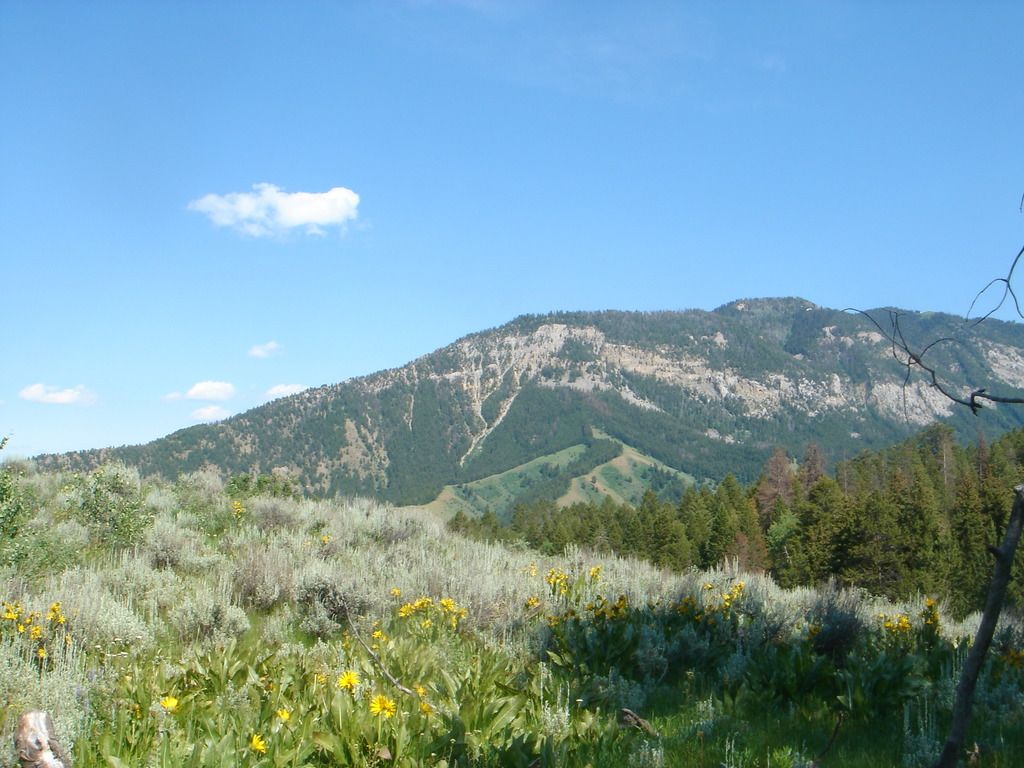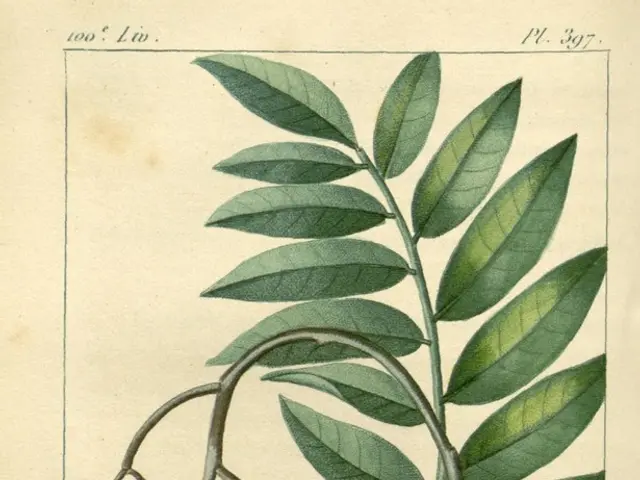Types of Apples to Cultivate
Biting into a fresh, homegrown apple is pure delight, and they taste delicious whether you're munching on them or baking them into crumbles and pies. When picking your apple tree, pay attention to the tree's pollination group and the rootstock it's grown on. Most apple trees benefit from having two or more apple trees nearby for successful pollination, but self-fertile varieties like 'Granny Smith' won't need any companions.
To learn more about different rootstocks and their benefits, check out our handy guide on fruit tree rootstocks.
Want more apple-related goodness? Check out these videos:
- How to make apple juice
- How to pick apples
- Should I compost fallen apples?
Now, let's talk about some top apple varieties:
'Granny Smith'
This popular eating apple is loved for its firm texture and good crunch. It belongs to Pollination Group 3, so make sure to plant two or more varieties from Group 2, 3, or 4 nearby for successful pollination. Self-fertile.
'Braeburn'
'Braeburn' is a sweet-tasting self-fertile apple found in Pollination Group 4. It's the perfect variety for a delicious tarte tatin.
'Falstaff'
'Falstaff' is a heavy-cropping, self-fertile eating apple with a tangy crunch. It's excellent for juicing. Pollination Group 3. 'Red Falstaff' is a related variety with flushed red skin when ripe.
'Adam's Pearmain'
'Adam's Pearmain' is a traditional English dessert apple with a nutty flavor. This self-sterile variety belongs to Pollination Group 2, so make sure to have two or more different varieties in Groups 1, 2, or 3 nearby for successful pollination.
'Bramley's Seedling'
'Bramley's Seedling', or simply 'Bramley', is the classic cooking apple with a sharp, acidic flavor. It's perfect for purees and can be used in cakes and crumbles. This variety is self-sterile, so plan on having other varieties nearby for pollination.
'Redlove Era'
'Redlove Era' is one of the few apples with red flesh. It's both sweet and tangy, making it a versatile variety to eat fresh or cook with. Since this variety is self-sterile, make sure to have other varieties nearby for successful pollination.
'Cox's Orange Pippin'
'Cox's Orange Pippin' is considered to have the best flavor of all apples. Its versatility means it can be used in sweet and savory dishes, cider, and juices. The downside is poor disease resistance, especially in cold, wet conditions. It's self-sterile, so be sure to have other varieties nearby for pollination.
'Blenheim Orange'
'Blenheim Orange' has a spicy, russet flavor that works well in cooking, particularly tarts and purees. It's self-sterile, and you'll find it in Pollination Group 3.
'Lord Lambourne'
'Lord Lambourne' is an excellent eating apple with a sweet, tangy flavor and crisp flesh. A great choice for fresh eating or juicing. It's well-suited to colder, wetter areas. Pollination Group 2.
'Captain Kidd'
'Captain Kidd' is a self-sterile variety in Pollination Group 3. It's a convenient alternative to 'Cox's Orange Pippin', being easier to grow while still maintaining a sweet, aromatic flavor and crunchy texture. It's ideal for juicing and making tarts.
Apple varieties that store well
Not all apples store well. Early- and mid-season varieties will keep for a few weeks in the fridge, whereas late-season varieties can store for three months or longer. Here are some top varieties to store:
- 'Braeburn'
- 'Granny Smith'
- 'Gala'
- 'Meridian'
- 'Chivers Delight'
- 'Cox's Orange Pippin'
- 'Adam's Pearmain'
- 'Bramley's Seedling'
- 'Egremont Russet'
- 'Spartan'
Overall:
Apple tree rootstocks play a significant role in the success and productivity of apple orchards and home gardens. Choosing the right rootstock can influence tree size, disease resistance, cold hardiness, drought tolerance, and the productivity of the scion (the fruit-bearing part of the tree). Here are the key benefits provided by different apple tree rootstocks:
- Control of Tree Size
- Standard rootstocks produce large trees, suitable for orchards with ample space.
- Semi-dwarf rootstocks result in trees about 60% the size of standards, reaching 10–12 feet tall and ideal for many home gardens.
- Dwarf rootstocks produce very small trees (7–8 feet tall) that are perfect for small spaces, container growing, or intensive orchards. These trees require staking for support.
- Disease Resistance
- Certain rootstocks offer resistance to soil-borne diseases like fire blight, collar rot, and woolly apple aphid.
- Rootstocks like M9 are known for enhancing disease resistance.
- Early Fruiting and Productivity
- Dwarfing rootstocks often enable earlier fruit production, sometimes within a few years of planting.
- These rootstocks can improve orchard density and yield, as more trees can be planted per acre.
- Adaptability to Soil and Climate
- Rootstock selection can improve tolerance to cold, drought, or wet soils, depending on the specific characteristics of the rootstock.
- This adaptability makes it possible to grow apples in a wider range of environments.
- Ease of Management and Harvest
- Smaller trees are easier to prune, thin, and harvest, reducing labor costs and the risk of injury.
- Narrow tree canopies also improve air circulation, which helps prevent fungal diseases.
Common Apple Rootstocks and Their Characteristics
| Rootstock Type | Typical Tree Size | Key Benefits | Notes ||------------------|------------------|---------------------------------------|------------------------|| Standard (seedling) | Large (20–30 ft) | Vigorous, long-lived, adaptable | Needs more space || Semi-dwarf (EMLA 7) | 10–12 ft | Easier management, good productivity | Suitable for backyards || Dwarf (EMLA 9, 26) | 7–8 ft | Early fruiting, high-density planting | Requires support |
Here are two sentences that contain the words 'lifestyle', 'home-and-garden', and 'gardening':
- With the right apple tree varieties in your home-and-garden, you can enjoy a delightful lifestyle filled with homemade apple dishes, from crumbles to pies.
- Embracing a gardening lifestyle, you can transform your home-and-garden into an orchard bursting with vibrant, self-fertile apple trees, enhancing both aesthetics and food sustainability.






